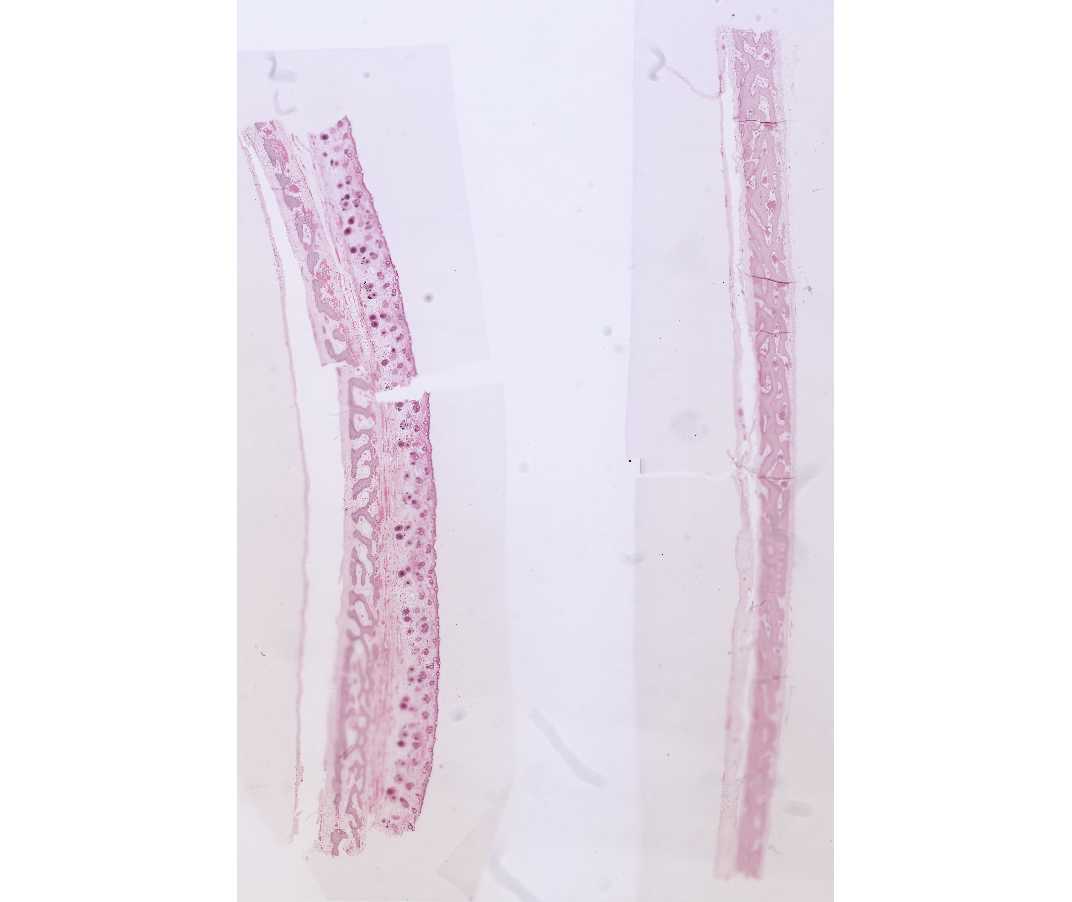SBPMD Histology Laboratory Manual
Bone Development: Intramembranous Ossification
The process by which bone is formed is termed osteogenesis or ossification. Bone is never formed as a primary tissue: it always replaces a preexisting support tissue. There are two types of bone formation: intramembranous and endochondral ossification.
In intramembranous ossification, bone develops directly on or within membrane formed by mesenchyme. This, like all bone growth, is appositional. This process can be studied best in the irregular bones of the face and the flat bones of the skull (often called membrane bones).
#94 Parietal bones, Human fetuses, or mandible (animal) - Decalcified
Open with WebViewer
With the scanning objective notice the appearance of the developing bone as well as the total absence of cartilage. (If the scalp is present, numerous hair follicles can be seen. Some of the slides of the mandible may have a developing tooth.) Note the connective tissue has begun to condense as a fibrous periosteum on either side of the anastomosing trabeculae of the growing bone. The trabeculae surround large spaces (primitive marrow cavities) containing embryonic connective tissue, thin-walled blood vessels and nerves. In active regions, a unicellular row of osteoblasts (each with an eccentric nucleus and strongly basophilic cytoplasm) lines the surface of the trabeculae. Osteoclasts may be seen to occupy shallow pits in the bone (Howship's lacunae). Within the trabeculae, notice osteocytes in their lacunae and the woven bone matrix, which, unlike that of mature bone, is unevenly stained pink and exhibits a patchy basophilia. The acidophilic collagenous fibers embedded in the matrix tend to be obscured by the matrix. At this stage the matrix is not calcified (i.e., contains no calcium phosphate salts). This uncalcified early bone is termed the osteoid. Later, minerals are deposited as minute hydroxyapatite crystals (calcium phosphate salts) in close association with the collagenous fibers to form a solid rigid matrix. Strongly basophilic cementing lines are clearly visible between old and newly deposited bone.